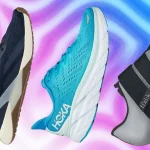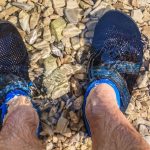The first assumption about what happens when people run with Pes Cavus is that they supinate or roll outwards. This also means they are doing the opposite of an over-pronator.
That assumption may not always be true. A high-arched foot may also pronate under certain circumstances.
It is also believed that high arches do not need shoes with arch support. But this belief is misplaced.
Normally, an arch helps to mitigate the force of each step taken and stabilizes the rest of your body. A high arched foot will distribute weight from the rearfoot and onto the front before it can build up too much pressure on either one.
Thus, with adequate levels of arch support and midsole cushioning, the load can be carried safely.
Though many running shoes have a supportive midsole along with varying levels of under-arch support, it might be a good idea to get a custom orthotic or an aftermarket insole. It can’t hurt just looking at these helpful tips for picking out proper footwear for people with orthotics.
Running shoes that are featured in this guide can do two things well.
These insoles provide you with comfortable landings and transitions which are gentle on your feet and arch. But they don’t offer too much support, so overcorrecting your stride will not happen.
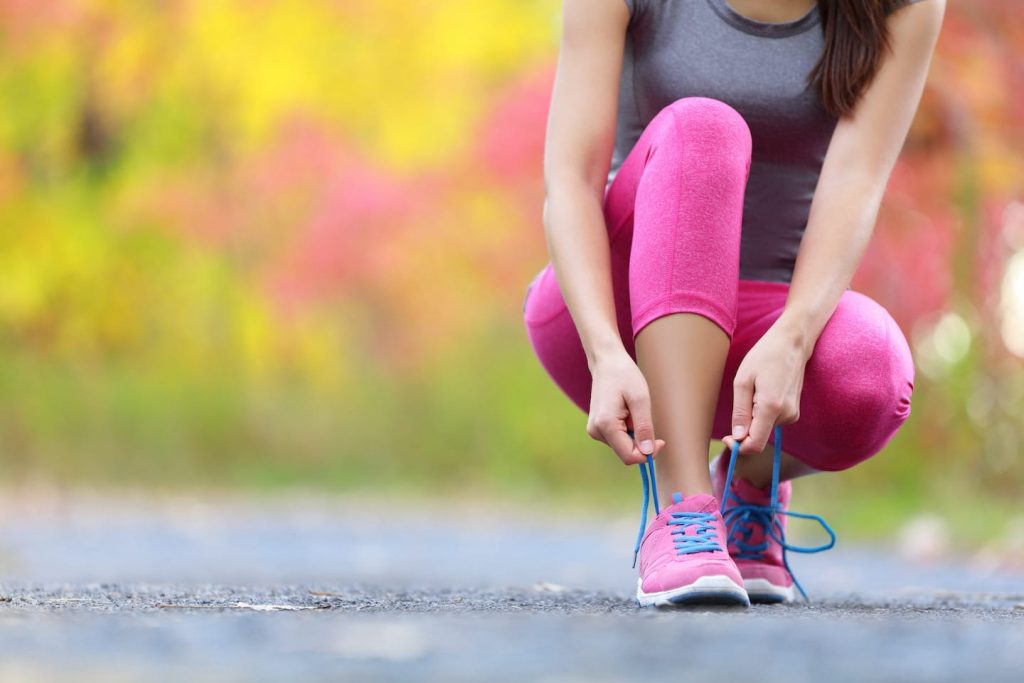
It is important to know the difference between ‘cushioned’ and ‘softest’ shoes because they are different things. You do not want a shoe that will make you feel unstable, no matter what type of arch you have.
However, if you’re looking for a soft yet light-weight shoe with amazing shock absorption, then the Nike ZoomX Involute might just be what you need. It won’t run very fast but is great for athletes who are on their feet all day.
None of the models recommended in this guide have excessively soft soles. These shoes instead combine impact-absorbing cushioning with a supportive ride.
Most of them perform well in the arch support department, but it’s best to invest in an aftermarket orthotic for optimal fit.
Recent updates to shoes like the Saucony Ride 15 make them orthotic-friendly. The thick expanded Polyurethane footbed can be removed to accommodate a custom insole which will fit nicely under it.
If you have experienced pain or discomfort in the past due to your high arches, please consult a physiotherapist before reading this shoe guide.
1) Asics Gel-Cumulus 24
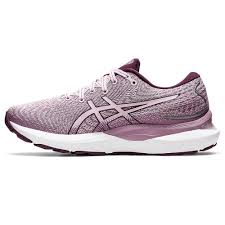
In general, the Cumulus has been getting progressively better each year. Earlier models were just as competent and versatile for everyday training runs, and so is the latest 24th generation model.
Taking inspiration from the Nimbus 24, the Cumulus 24 gets upgraded with a cushy Flytefoam Blast midsole.
With its cushioned yet stable upper, the Cumulus 24 provides a smooth and comfortable ride for most foot types.
The seamless, one-piece construction of the Upper provides an excellent fitting experience. It is true to size and there are no hotspots; it feels very comfortable. The upgraded Cumulus features a newly designed Inner Gusset which wasn’t present in its predecessor, making this shoe even more superior than before.
The Cumulus 24 is a great option if you want to train daily, but don’t push speed past 4:30 per kilometer. Learn more about what this shoe can and cannot do by reading our detailed product review!
2) Nike Zoom Structure 24
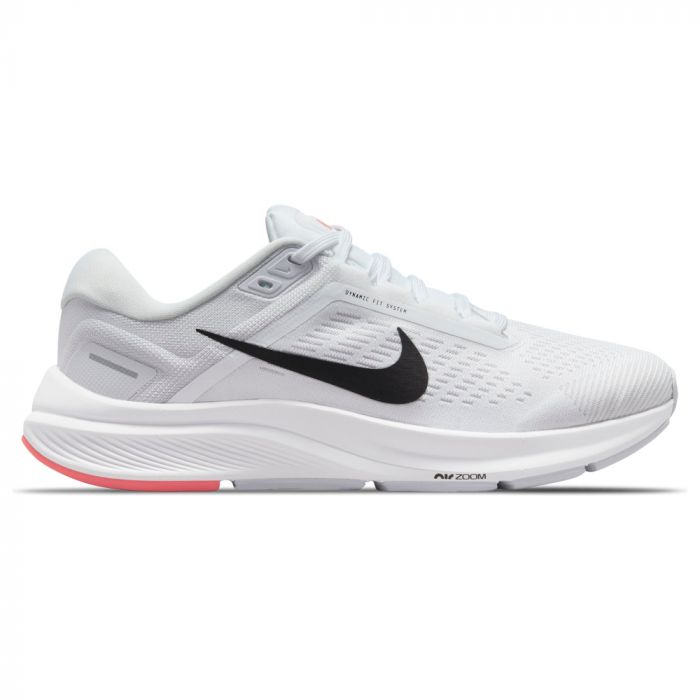
A few years ago, if somebody had told us that the Nike Zoom Structure would be featured on this guide, we would have been highly shocked.
After all, it was the Structure that was Nike’s most popular stability shoe with a medial post – not just any type of shoe you wear when mixing in neutral shoes.
Its feel is now cushioned and it has a balanced ride; its upper too is plush. This change took place last year when they updated Structure 23 – which was barely distinguishable from these changes.
Unlike earlier versions of the structure, there are no stability devices which seek to control or alter the gait process.
In our comprehensive review, we noted that the Nike Structure 23 felt just like the perfect winged horse. It has sufficient ride comfort for long-distance runs yet it is also peppy enough for short distances.
Because the 23 and 24 are almost identical besides a few minor cosmetic changes, it doesn’t matter which one you buy. You’ll still feel the same when walking in them, and they will have a similar upper fit experience.
3) Saucony Ride 15

By 2022, Saucony’s selection of running shoes will seem completely new – at least for the popular models like the Endorphin Line and staples such as the Guide and Ride.
Speaking of which, Saucony’s iconic neutral runner – aka the Ride – has been given an exclusive makeover.
Rather than being stiff like some of its predecessors, the Ride 15 comes equipped with thick cushioning and an E-TPU insole. The upper is also roomier and lets air circulate throughout rather well – one thing which made it my favorite shoe by far.
While the Ride 14 may work well for those with higher arches, it doesn’t compare to the V15.
This design is likely because the inner sole of the shoe has an arch that flares out for extra padding, while also providing a comfortable and non-biased feel to those who wear it. Still, it remains a very firm running shoe due to its high quality construction; so anyone looking for something with less cushioning may want to look elsewhere.
4) adidas SolarGlide
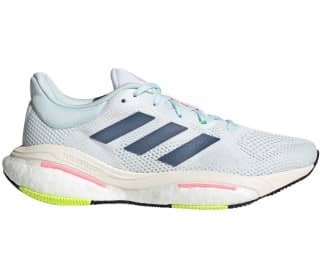
Forget everything you know about the Adidas Solarglide- it’s time for an upgrade. With so many new features and improvements, we had to take a look at all of them in our comprehensive review.
Although the Solarglide 5 is almost identical to its predecessor, it does offer some improvements in cushioning and stability.
The redesigned LEP shank also creates a supportive ‘wing’ over the forefoot and heel.
The breathable and smooth inside of the shirt is puzzling when you take away its sleeves. When something doesn’t need it, why include it? The raw edges can be bothersome for some people, but it’s hard to deny how comfortable they are. Too bad shoe companies never reveal their secrets.
Having stated this, the Solarglide 5 is one of the best options for high-arched runners. For starters, the removable insole cups the foot on either side of it.
The Boost midsole provides enough cushioning so that you’re able to move freely without being constrained. This stability is made possible because of the extension of the LEP shank, which covers up much of the shoe’s sole area.
5) Hoka One One Clifton 8
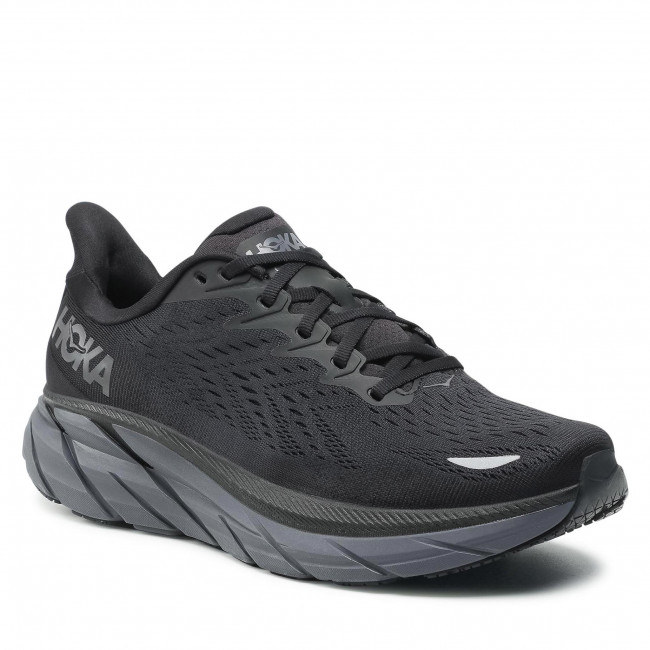
As a result of Hoka’s long-standing reputation for providing full-foot coverage and unparalleled cushioning, the Clifton reigns as one of its most popular models.
Unlike its counterpart, the Clifton 8 offers a perfect balance of lightweight design and maximum cushioning. It can handle both short sprints or distances of up to 10 miles with ease.
It has an elastic and bouncy sole which makes running feel light and easy, but also supports you when needed. This is thanks to the wide base of this shoe which holds up under pressure while supporting your stride effortlessly, even on rough terrain. There are curved shapes on the inside that allow for a natural rolling motion so you can take off more quickly at first contact.
The soft cushioning of the Clifton is perfect for most runners regardless of how they strike their feet or how they move.
The new design of the Clifton 8 provides an improved upper. The fabric is made from two materials, and has been modified to provide a cushioned feel. The back has also had some changes; there are two layers that provide a gentle stretch.
6) New Balance Fresh Foam 1080 V12
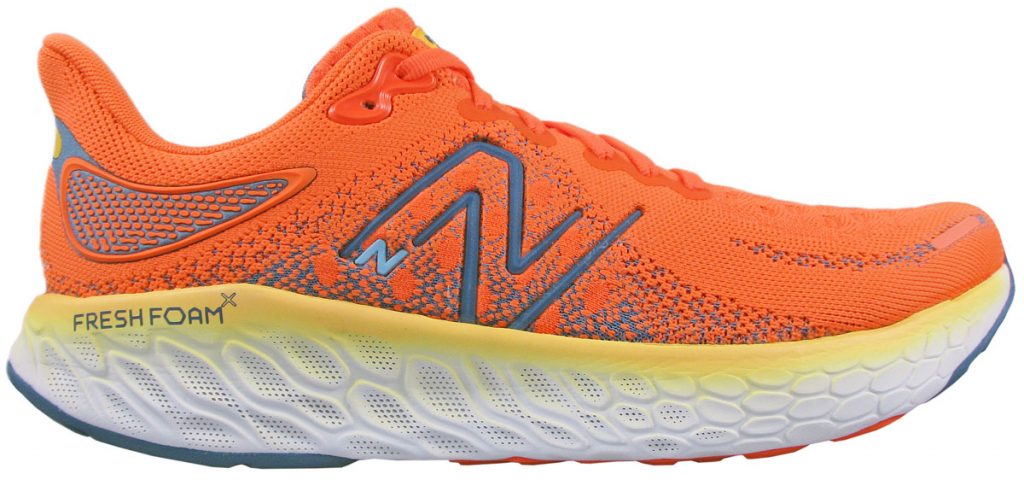
The high volume midsoles of the 1080 V12 make it perfect for running longer distances while feeling comfortable.
Making this possible is a cushioned insole and an off-center design that bends with the Fresh Foam stack. It isn’t sloppy, yet it still feels soft enough to be very comfortable.
It doesn’t provide any form of stability or motion control, but also isn’t likely to aggravate existing injuries either.
The mesh upper of this shoe molds to the shape of my foot comfortably without cutting off my circulation. The internal gusset prevents slippage while walking so there’s no blisters or discomfort. A variety of width options are available for all three sizes – narrow, wide, and extra-wide.
7) Asics Gel Nimbus Lite 3
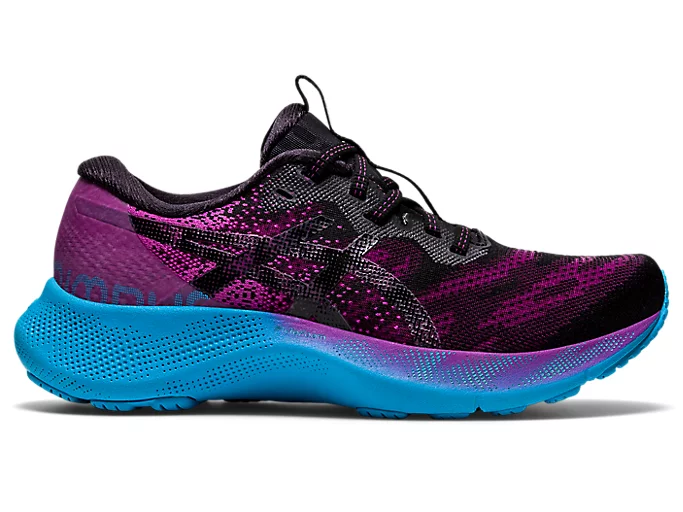
Our judgement is that the Nimbus Lite 3 is more versatile than the Nimbus 24 because it has a smoother transition from heel to toe combined with comfortability.
Missing on the midsoles of this shoe are traditional Asics features, like an exposed Gel unit and midfoot shank. This iteration of the Nimbus focuses mainly on simplicity without compromising function.
A supportive flytefoam stack supplies most of the cushioning, making this shoe much more comfortable than the Nimbus 24. The flared sidewalls make it easier to load at run stations, which is an added bonus for runners who often compete in races with varying distances.
The upper fit of this shoe is what brings stability to it. It covers the foot tightly and closer than the Nimbus does, therefore giving me more power input so I can feel the ground better and know how much force I’m using.
All these aspects come together to create a shoe that works for most runners, no matter what shape their arch is.
8) Saucony Triumph 19
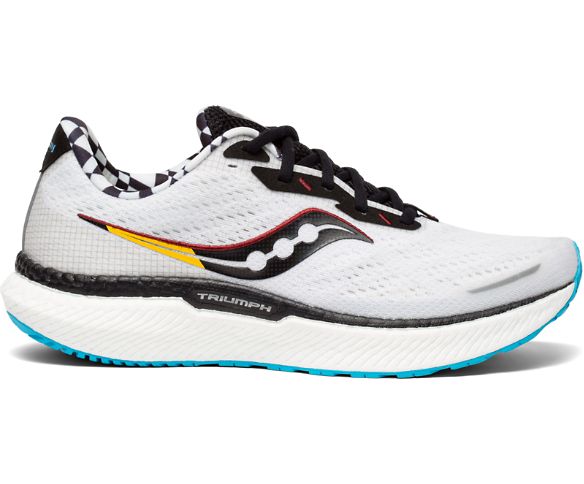
We prefer the newer Triumph variants (including the V18) over the Everun (Triumph ISO V1 -5) models.
This is because while both Saucony cushioning technologies are based on expanded Polyurethane, the Pwrrun+ foam provides superior cushioning and responsiveness.
It’s important to note that the feel of this shoe is closer to adidas boost than its rival brand, Nike Zoom. It offers an adequate middle ground betwejen cushioning and stability.
The Triumph 19 also has a high volume midsole which is wide under the heel and forefoot.
This design attracts runners of all skill levels who are looking for a shoe that can withstand distance and speed. With ample traction from the rubber soles, it provides comfort no matter what type of terrain you’re running on.
The Triumph 18 and 19 are both similarly responsive, but there are some differences between them that make each shoe unique. For example, the Triumph 18 is a little heavier than the Triumph 19 which means it breathes worse when worn long term – an issue not present in the lighter weight (and better-breathing) Triumph 19.
9) Brooks Glycerin 20
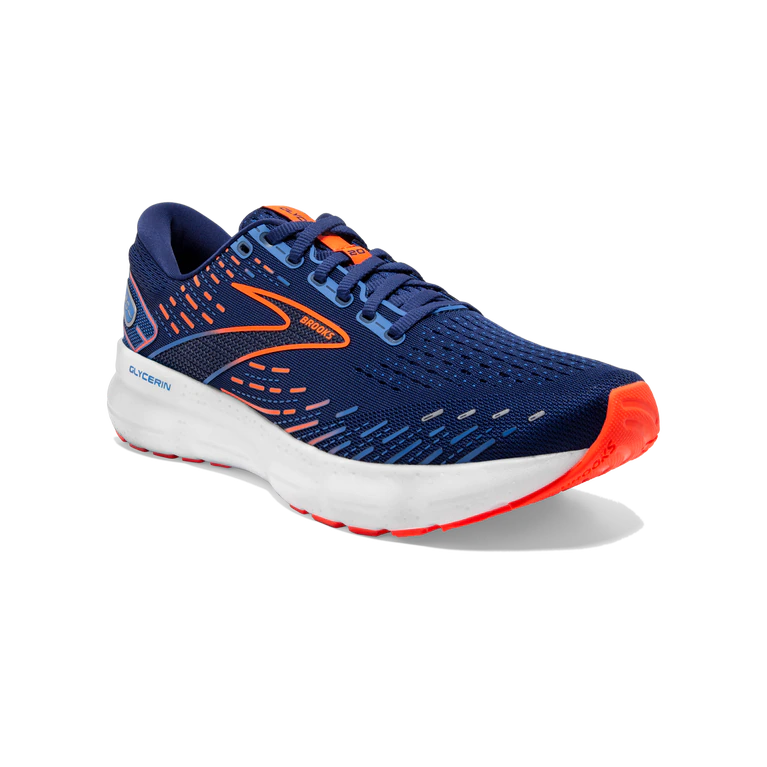
The Brooks Glycerin has been Brooks’ go-to neutral running shoe for nearly 20 years. The balanced ride is one of the reasons this shoe continues to be popular.
And that doesn’t change when the Glycerin 20 now has a new cushioning for midsole which is made from DNA Loft V3. It’s a material similar to Hyperion Tempo, just softer and slightly heavier. Our US 11 Glycerin weighs over 11 ounces.
The ride isn’t super soft like what Brooks’ marketing would make it seem. Compared to truely plush shoes such as the New Balance 1080, this shoe falls in the middle of the hardness scale. The full contact outsole fills up all of those tiny little cracks for a smoother ride.
This ride behavior makes this shoe suitable for most runners with normal arches, who are looking for a daily driver.
It is worth noting that the Glycerin 20 does not have an inner sleeve like the old version of Glycerin 19. This makes for a more spacious and breathable interior than before as there is no longer any chance of it shrinking or feeling too constricting.
In addition, the Glycerin 20 GTS should be considered.
This shoe has an extra-raised middle part (called Guiderails) for added stability and increased foot control, which makes it similar to the popular Glycerin model. On top of this, these shoes also have booties for comfort- which are good if you’re looking for some heels that don’t cause too much pain! All in all, we think this shoe is really great because it offers a lot of benefits without compromising on important features or affordability.

